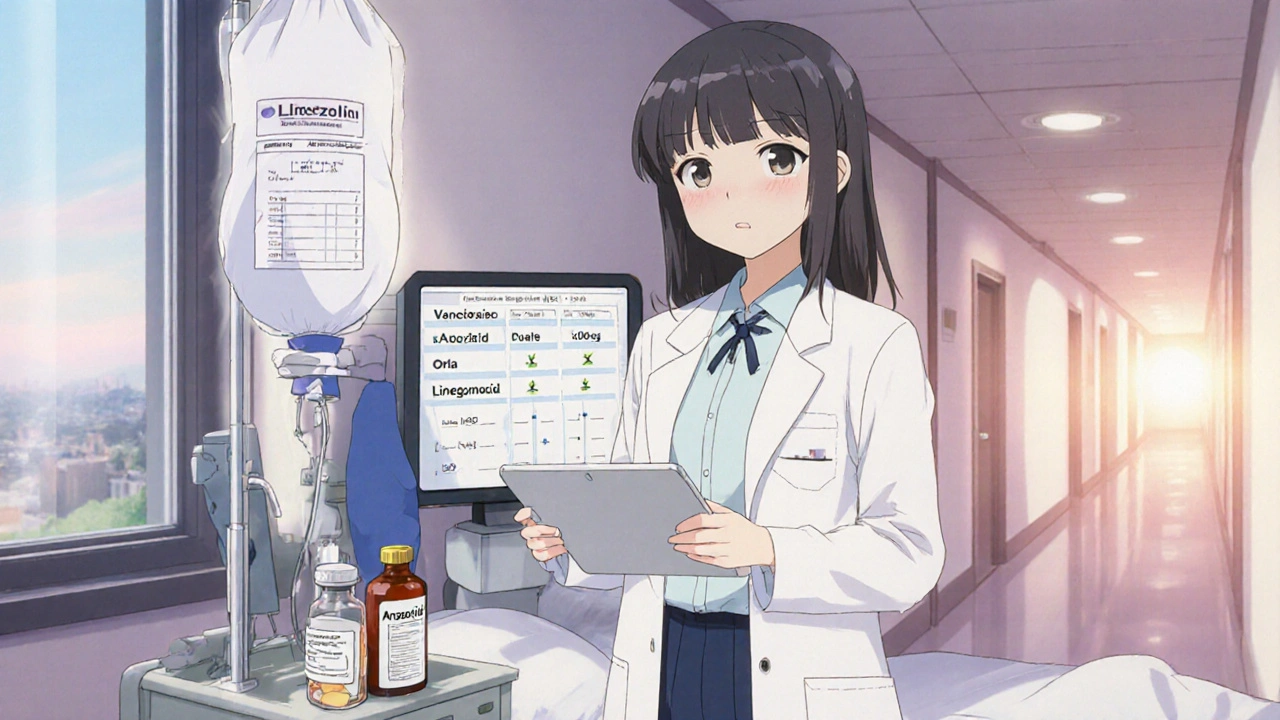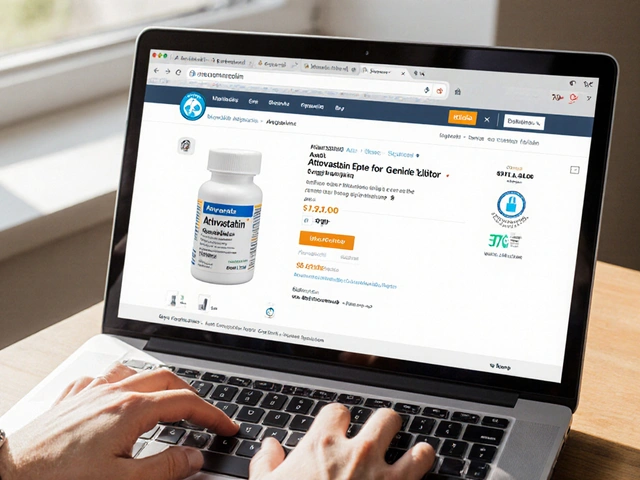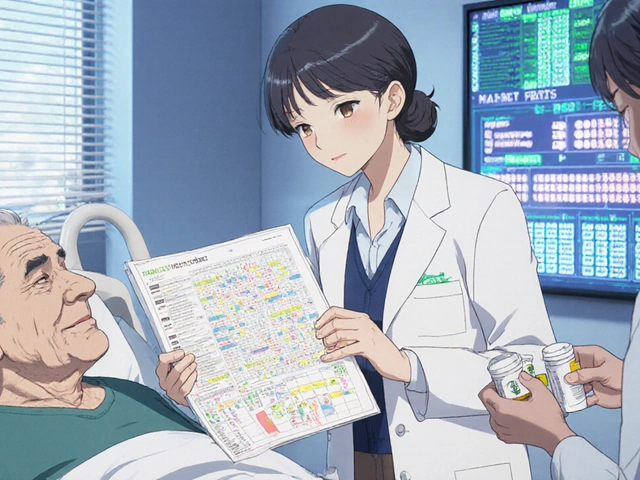When doctors need to treat serious infections like MRSA or VRE, they often reach for powerful antibiotics. Linezolid is an oxazolidinone antibiotic sold under the brand name Zyvox. It’s become a go‑to choice for many clinicians, but is it always the best pick? Let’s break down how Linezolid stacks up against the most common alternatives, so you can understand when it shines and when another drug might be a smarter move.
How Linezolid Works and Who It Targets
Linezolid blocks bacterial protein synthesis by binding to the 50S ribosomal subunit. This action stops the bacteria from growing, making it bacteriostatic for most organisms and bactericidal for some. Because of its mechanism, Linezolid is effective against a range of Gram‑positive bugs, especially Methicillin-resistant Staphylococcus aureus (MRSA) and Vancomycin‑resistant Enterococci (VRE). It’s available in both oral and IV forms, which gives doctors flexibility for step‑down therapy (switching from IV to pills).
Key Decision Criteria for Choosing an Antibiotic
- Spectrum of activity: Does the drug cover the suspected pathogen?
- Route of administration: Oral, IV, or both?
- Safety profile: How common are side effects and drug interactions?
- Cost and insurance coverage: Is the drug affordable for the patient?
- Resistance patterns: Is the local hospital seeing rising resistance to this agent?
These five factors drive most antibiotic choices. Below is a quick look at how Linezolid measures up against four popular alternatives.
| Attribute | Linezolid (Zyvox) | Vancomycin | Daptomycin | Tedizolid |
|---|---|---|---|---|
| Spectrum (Gram‑positive) | Broad, includes MRSA, VRE, linezolid‑resistant strains rare | Strong, especially MRSA; limited oral option | Excellent for MRSA, VRE; ineffective in lungs (inactivated by surfactant) | Broad, similar to linezolid, FDA‑approved for skin infections |
| Administration | IV & oral (dose‑flexible) | IV only (requires infusion) | IV only (once‑daily) | IV & oral (twice‑daily) |
| Typical Dose | 600 mg every 12 h (IV or PO) | 15‑20 mg/kg q12h IV | 4‑6 mg/kg once daily IV | 200 mg IV/PO every 12 h |
| Common Side Effects | Thrombocytopenia, peripheral neuropathy (long‑term), serotonin syndrome risk | Nephrotoxicity, ototoxicity, “red man” infusion reaction | Myopathy (CK elevation), eosinophilic pneumonia | Similar to linezolid but less myelosuppression |
| Cost (US, 2025) | ~$190 per day (brand) - generic cheaper | ~$30 per day (generic) | ~$150 per day | ~$250 per day (brand) |
| Key Indications | Complicated skin/soft‑tissue infections, pneumonia, VRE bacteremia | Severe MRSA infections, C. difficile‑associated colitis (off‑label) | Right‑sided endocarditis, bacteremia, skin infections | Acute bacterial skin and skin‑structure infections (ABSSSI) |
Deep Dive into Each Alternative
Vancomycin
Vancomycin has been the classic drug for MRSA for decades. It’s a glycopeptide that interferes with cell‑wall synthesis. Because it’s only IV, patients need a line or port for the entire course, which can be a hassle for outpatient therapy. The drug can damage kidneys, especially in older adults or those on other nephrotoxic meds. If a patient has normal renal function and needs rapid bactericidal activity, Vancomycin often wins.
Daptomycin
Daptomycin, a cyclic lipopeptide, punches holes in bacterial membranes. It’s powerful against MRSA and VRE, but it can’t be used for pneumonia because lung surfactant neutralizes it. Monitoring creatine kinase (CK) levels is a must-high CK means muscle damage. For bloodstream infections or right‑side endocarditis, daptomycin is a strong candidate, especially when you want a once‑daily dose.
Tedizolid
Tedizolid is the newer sibling of Linezolid, also an oxazolidinone. It shares the same protein‑synthesis blockade but generally causes less thrombocytopenia and can be given for a longer period without the same neuropathy concerns. It’s approved mainly for skin infections, and its cost is higher than generic linezolid. If a patient needs a long course for bone infection, tedizolid can be a gentler option.
Tigecycline
Though not a direct competitor, tigecycline sometimes appears in discussions about multidrug‑resistant Gram‑positive infections. It’s a glycylcycline with a super‑broad spectrum, covering many resistant bugs, but it’s only IV and linked to higher mortality in severe infections. Its nausea‑inducing side effect profile also limits outpatient use.

When Linezolid Is the Best Choice
Pick Linezolid when you need:
- Oral step‑down therapy without losing coverage.
- A drug that works reliably against VRE.
- Coverage for MRSA pneumonia (where daptomycin fails).
- A relatively short‑term regimen (up to 28 days) where monitoring is feasible.
Remember to watch platelet counts after the first week, especially in patients with liver disease or those on other myelosuppressive agents.
Practical Tips & Common Pitfalls
- Check for serotonin‑synergy drugs. Linezolid is a weak MAO inhibitor; avoid combining with SSRIs, tramadol, or meperidine without consulting a pharmacist.
- Monitor blood counts. Platelet drops can appear after 10‑14 days. If counts fall below 100,000/µL, consider switching.
- Watch for peripheral neuropathy. Long‑term (>28 days) use can cause tingling or numbness. Promptly report symptoms.
- Consider cost. Generic linezolid is now available, shaving the price down to roughly $80‑$100 per day, but insurance formularies vary.
- Adjust for renal impairment. No dose change is needed, but keep an eye on accumulation of metabolites that might affect platelet recovery.

Quick Takeaways
- Linezolid offers both IV and oral options, making discharge easier.
- Vancomycin remains cheaper but needs IV and can hurt kidneys.
- Daptomycin is great for bloodstream infections but not for lung disease.
- Tedizolid may be gentler on blood counts for long courses.
- Always match the drug to the infection site, resistance pattern, and patient’s comorbidities.
Frequently Asked Questions
Can I take Linezolid with my antidepressant?
Only under close medical supervision. Linezolid can raise serotonin levels and may trigger serotonin syndrome when mixed with SSRIs, SNRIs, or MAO‑inhibitors. Your doctor might pause the antidepressant or choose a different antibiotic.
Is oral Linezolid as effective as IV?
Yes. Studies show >90% bioavailability, so the oral form reaches the same blood levels as IV. That’s why many hospitals switch patients to pills after 48‑72 hours of IV therapy.
What should I watch for during a 2‑week Linezolid course?
Baseline CBC, then repeat every 3‑4 days. Look for dropping platelets, rising liver enzymes, or signs of neuropathy. Also ask about any new headaches, visual changes, or tingling sensations.
How does Linezolid compare cost‑wise to Vancomycin?
Vancomycin generic costs around $30‑$40 per day, while generic Linezolid sits near $80‑$100 per day. Brand‑name Linezolid (Zyvox) can exceed $180 per day. Insurance coverage and hospital contracts can change these numbers.
When should I choose Tedizolid over Linezolid?
If you need a longer treatment (up to 6 weeks) and want a lower risk of thrombocytopenia, Tedizolid may be preferable, especially in older patients or those with baseline low platelets.







8 Comments
Hey folks! 🌟 If you’re juggling MRSA or VRE cases, remember Linezolid’s oral switch can really smooth discharge planning. It’s a solid pick when you need both IV and pill options, especially for patients heading home. Just keep an eye on platelets and you’ll be golden. 😊
Alright, let’s dive into the nitty‑gritty of why Linezolid can be the superstar in your antimicrobial arsenal. First off, the dual IV‑oral formulation means you can start aggressive therapy in the ICU and then gracefully transition to a simple capsule for outpatient follow‑up. That flexibility slashes hospital length‑of‑stay, which in turn saves a bundle of dollars and reduces the patient’s exposure to invasive lines. Speaking of dollars, the generic version has finally entered the market, pulling the price down from a sky‑high premium to a more palatable range. While Vancomycin still undercuts it on raw cost, you have to factor in the price of IV pumps, infusion chairs, and the dreaded “red‑man” reaction. Moreover, Linezolid’s impeccable lung penetration makes it a rare gem for treating MRSA pneumonia, a niche where Daptomycin simply flops. On the downside, the drug does have a reputation for playing tricks with your blood counts, especially after a week or two of therapy. Thrombocytopenia can sneak up, so a CBC every three days isn’t just a suggestion-it’s a lifesaver. For patients with pre‑existing liver issues, you’ll want to monitor for peripheral neuropathy, a side effect that can linger long after you stop the drug. The serotonin‑synergy warning is another curveball; mixing with SSRIs without a wash‑out period can trigger serotonin syndrome, so a quick chat with the pharmacist is mandatory. In contrast, Vancomycin’s nephrotoxicity risk is higher in the elderly, making Linezolid a gentler option for that demographic. Daptomycin shines in bloodstream infections but refuses to work in the lungs, so your choice hinges on the infection site. Tedizolid offers a softer side‑effect profile, especially for long‑term bone infections, but its price tag can be prohibitive for many health systems. Finally, don’t forget the local antibiogram-if your hospital’s VRE rates are soaring, Linezolid’s broad coverage becomes a strategic advantage. Bottom line: weigh the infection type, patient comorbidities, cost, and the convenience of oral step‑down, and Linezolid often lands near the top of the list. 🎉
Oh sure, because we all have endless time to draw daily CBCs while juggling a Netflix binge, right? If you love living on the edge, go ahead and ignore the platelet drop-who needs a safe discharge anyway?
One must acknowledge the elegance of an agent that traverses both intravenous corridors and oral highways with such poise. Linezolid, in its duality, offers clinicians a rare alchemy of potency and convenience, rendering it a darling of contemporary pharmacotherapy.
i guess linezolid is kinda cool but like, who even reads all that fancy data? my brain just says “take the pill and go home” lol 🤔✌️ but yeah, watch those platelets or u’ll be in trouble.
Monitor CBCs; switch if platelets <100k.
Some folks think the pharma giants hide the real side‑effects of Linezolid, feeding us only the polished press releases while the shadows whisper about long‑term neuropathy that never makes it to the label. It’s like a silent experiment in our hospitals, and we’re the unsuspecting subjects.
Oh, the hidden agenda of “big pharma” strikes again-because apparently we’re all just guinea pigs in a giant pill‑pushing theater.
Write a comment